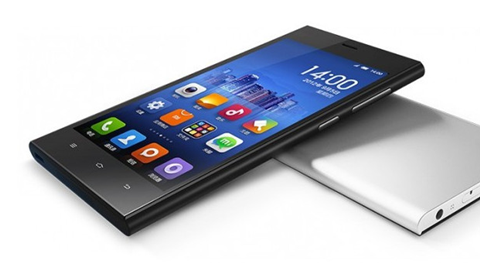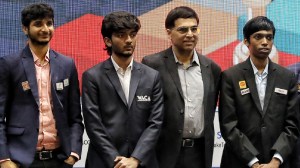- India
- International
Xiaomi now third largest smartphone maker, Indian companies more dominant at home: Canalys
Samsung still holds a sizeable share and volume lead in the global market accounting for 25 per cent of Q3 2014 shipments
 The Xiaomi MI3 was a runway success in India, though for just a month
The Xiaomi MI3 was a runway success in India, though for just a month
Fresh from success in China and India Xiaomi has emerged as the third largest vendor globally in Q3 2014 when smartphone shipments crossed 300 million units for the first time, according to research firm Canalys.
While Mainland China accounted for 34 per cent of Q3 smartphone shipments, United States accounted for 13 per cent and India 6 per cent. The Indian market has seen significant growth in recent quarters and in Q3 2014 was up 84 per cent on the same quarter a year ago and up 29 per cent on Q2 2014.
“A key similarity to the Chinese market has emerged in India with respect to the substantial contribution made by domestic vendors,” said Canalys Research Analyst, Rushabh Doshi. “Three of the top five vendors there – Micromax, Lava and Karbonn – are Indian companies, achieving promising growth in their home market, but with aspirations and potential, in time, to be disruptive on the global stage. With market leader Samsung’s share down 6 per cent from Q2, it has faced stiff competition from local players with aggressive pricing strategies,” he said.
Android One is making steady progress in the low end across India where it was first launched thanks to local partners, including Intex, Karbonn and Micromax. Doshi said Android One will grow as more partners come on board, adding further pressure. “Growing demand from the large, youthful middle class; the rising popularity of online channels, such as Flipkart; and the increasing availability of better quality, aggressively priced smart phones and affordable mobile data tariffs are all driving the smart phone market in India forward.”
“Notably, Chinese vendors are looking to India as an emerging high-growth opportunity,” said Doshi. “But with regulatory concerns over data sovereignty, international vendors with already established brands, and promising domestic vendors with local differentiation to contend with, the challenge for them to gain a real foothold should not be underestimated,” he added.

“The global market is becoming more competitive, with vendors beyond Samsung and Apple enjoying growing success,” said Chris Jones, VP and Principal Analyst at research firm Canalys. The firm’s country-level smart phone data for Q3 2014 shows the global market in robust health, with year-on-year growth of 23 per cent over Q3 2013, and a shipment total exceeding 300 million units in a quarter for the first time.
“A year ago, in Q3 2013, Samsung and Apple together accounted for 48% of worldwide smart phone shipments. While still impressive, in Q3 2014 this had slipped to 38%. This trend is likely to continue,” said Jones adding that this it is coming down to the strong value proposition and increasing quality of products offered across all price points by competing vendors, most notably Chinese companies. In fact, six of the top 10 global vendors in Q3 are based in China.
Despite a fall from its high of 34 per cent in Q3 2013, Samsung still holds a sizeable share and volume lead in the global market accounting for 25 per cent of Q3 2014 shipments. Despite improving its share in China over the previous quarter, the Korean tech giant fell further behind Xiaomi, and lost share in key markets such as the United States and India, the report said.
Meanwhile, thanks to pent up demand Apple enjoyed very strong early shipments at the end of the quarter, boosting its share to 13%. In third place was Xiaomi with a 6% share, followed closely by Lenovo at 5%, and Huawei, also at 5%.
“It has been yet another stellar quarter for Xiaomi, which has extended its lead in China since last quarter, become the global number three vendor, and, encouragingly, achieved volume growth, albeit modest, in markets beyond mainland China, such as Taiwan, Singapore, Malaysia, and most significantly, India. China still accounts for the vast majority of Xiaomi’s shipments, and will do for the foreseeable future, but the proportion of its shipments heading elsewhere has doubled from 3% to 6% in a quarter,” said Jones.
“Lenovo also enjoyed another good quarter. But if its performance is considered in the light of its completed Motorola Mobility acquisition, the combined share is stronger still – equivalent to 8% of the global market. Lenovo has gained a US presence and brand, carrier relationships, and crucial patent cover to enable global expansion. Assuming it can consolidate and grow from its current position, Lenovo, with Motorola, is well placed to mount a real challenge to Apple as the worldwide number two vendor next year. And at just a fraction of a percentage point behind both Xiaomi and Lenovo, Huawei also represents a vendor with global aspirations and real growth potential as its brand awareness improves.”
More Tech
Must Read
Apr 23: Latest News
- 01
- 02
- 03
- 04
- 05




























